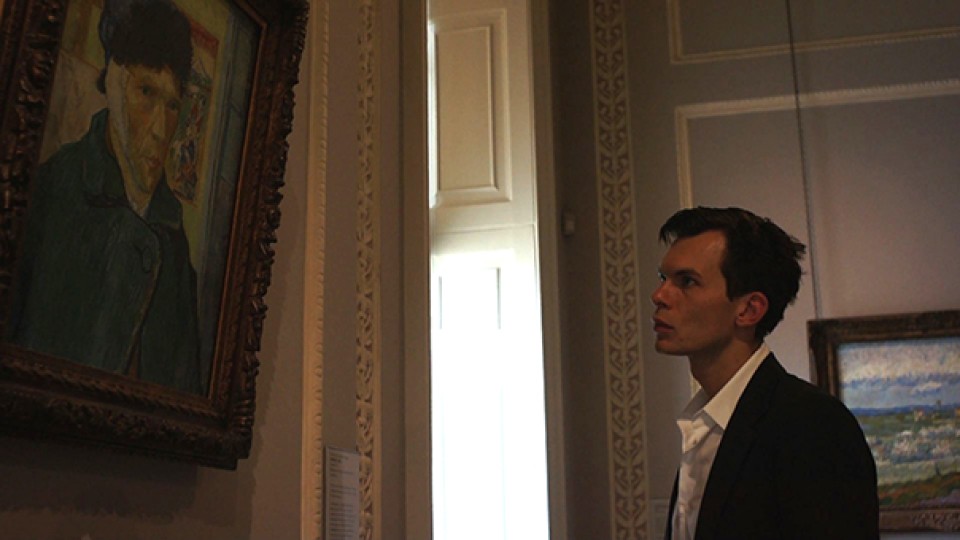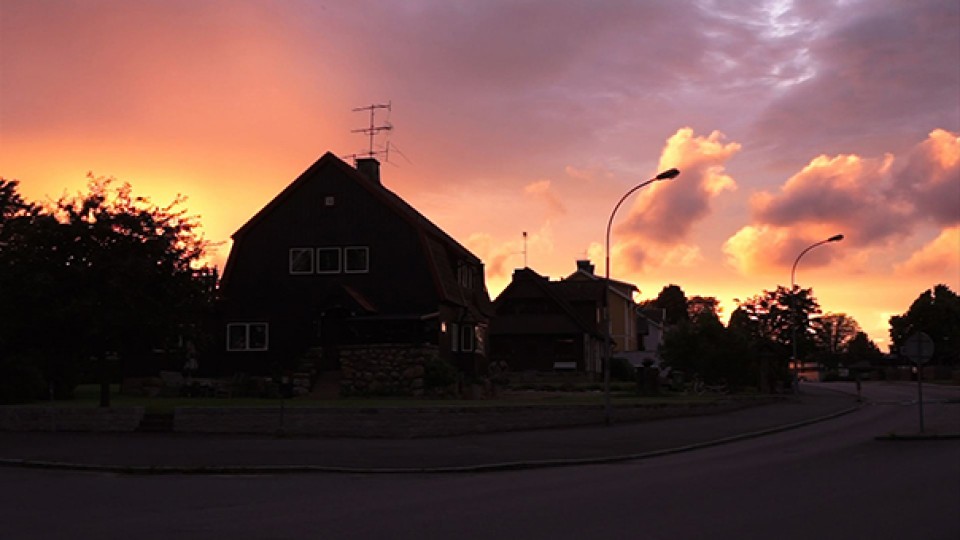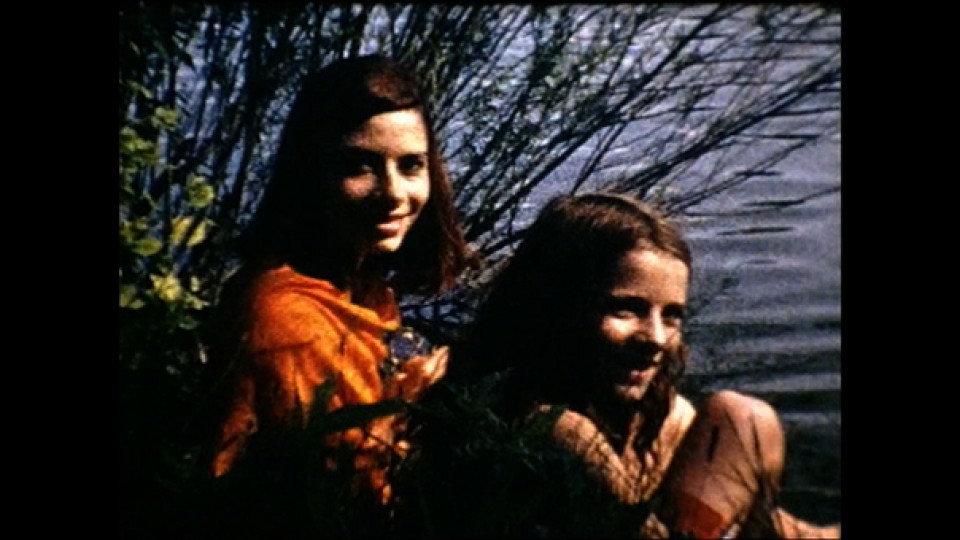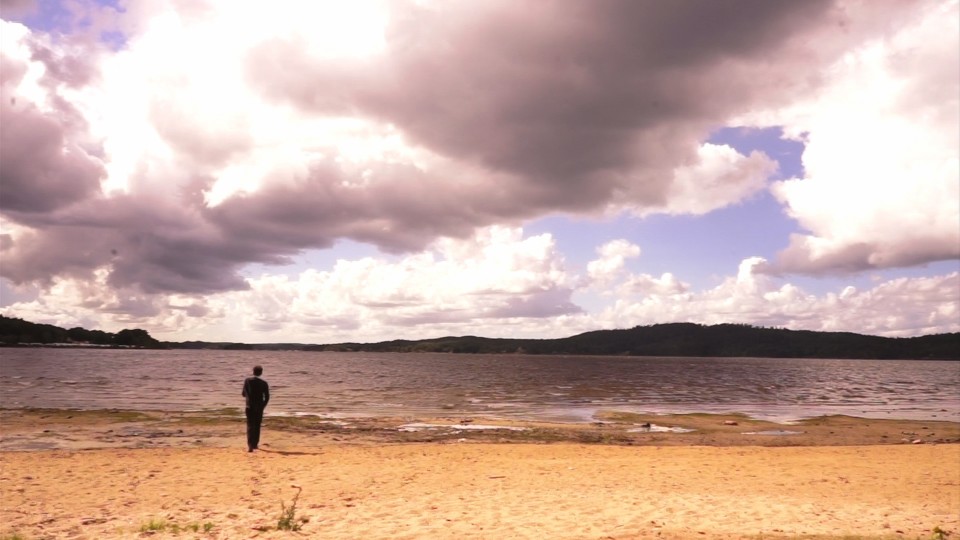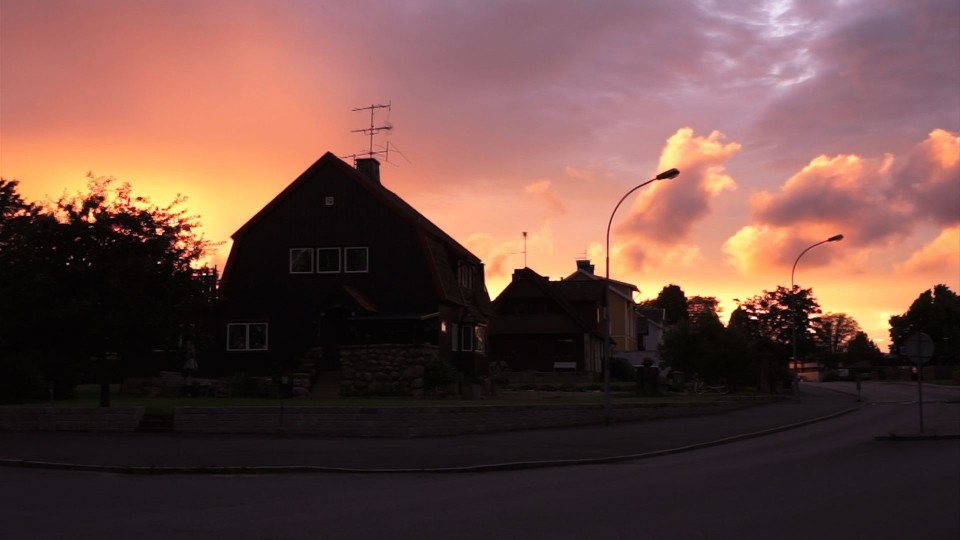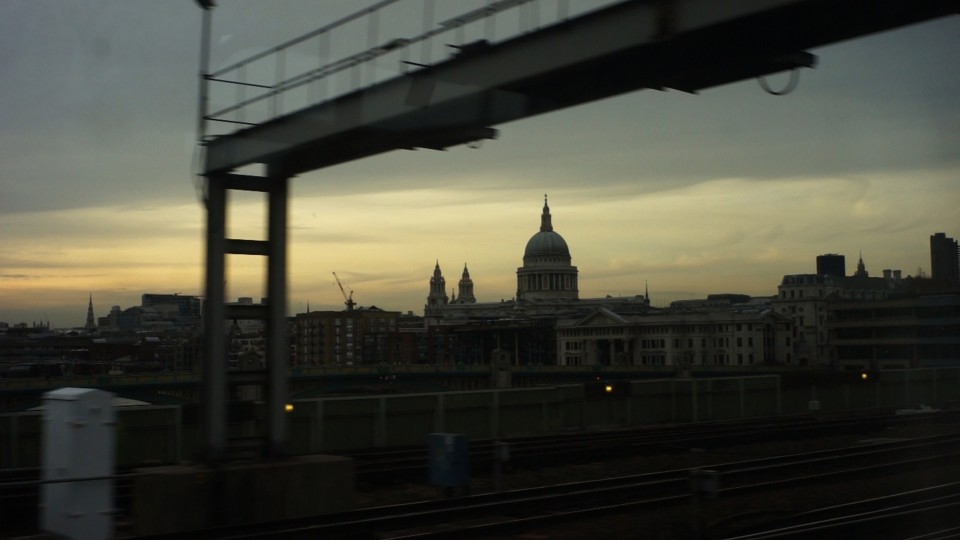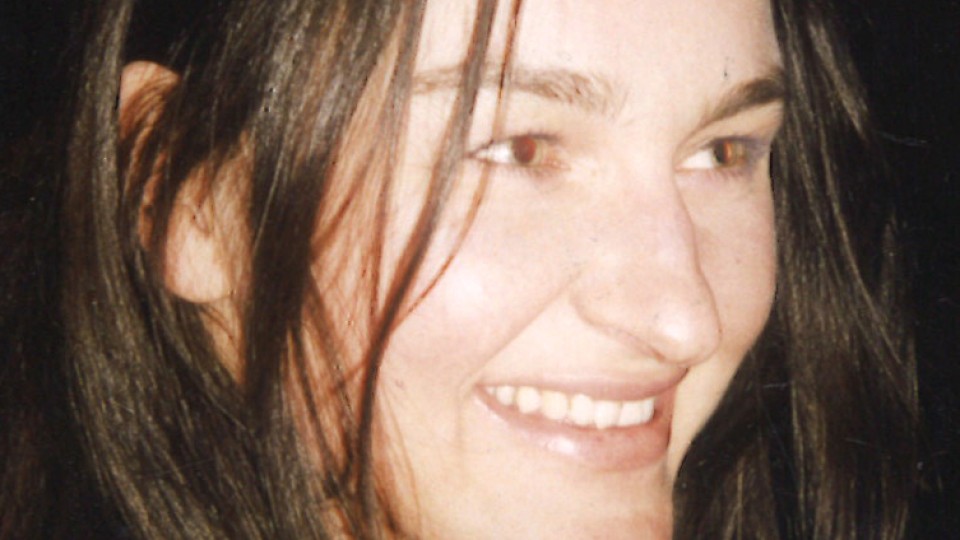In his autobiographical novel Leavetaking, Peter Weiss describes the obstacle course facing a child born in the early 20th century, his childhood and adolescence during his family's odyssey across Europe as exiles, and his process of artistic liberation
from bourgeois pressures. In her first full-length film FAREWELL, Astrid Johanna Ofner brings out the poetry of this text, composed without dialogue or paragraphs, in a visual version for
the big screen with subtle pacing.
Was Leavetaking your first literary encounter with Peter Weiss?
ASTRID JOHANNA OFNER: My first literary encounter with Peter Weiss was Leavetaking. It is a long time ago. When I was a student in Berlin I came across the book by chance, and reading it was a very moving
experience. Everything that was running through my mind at that time, as a young woman and a prospective artist, was addressed
there. The book became my companion for a long period. In my films I always like to proceed from a literary basis. After my
Kafka film, Tell Me on Tuesday, the idea of reworking Leavetaking as a film came to me quite spontaneously.
Why is literature so closely coupled with film in your artistic work?
ASTRID JOHANNA OFNER: My first artistic home was literature. Ever since childhood, especially during my adolescence, books were my only refuge.
In my Catholic home I didn't have a library at my disposal; religion was the fundamental basis of my cultural development.
My first film was based on a text by Marguerite Duras. I have always seen images while reading; I wanted to make films before
I knew what a film is. We didn't have a television at home, and in the little village I come from there was nothing apart
from a church and a grocery shop – certainly no cinema. At a very early stage I was regarded as somebody with a talent for
framing. I always operate the camera myself in my films, and I try to wait long enough to get the feeling that something really
exists in an image, an atmosphere, a place or a light. I try to capture that; in a way I set a trap to catch what happens
by chance.
After the death of his parents, Peter Weiss created a block of text extending over 150 pages without a single paragraph break.
I would imagine that when you were confronted with this you must have approached the work like a sculptor. How did you succeed
in bringing out the essence of the text?
ASTRID JOHANNA OFNER: In fact I really did feel a bit like a sculptor standing in front of a slab of stone. This text is formulated as a single
block, without paragraphs or dialogue. It's extremely complicated, a wonderful text with poetry of its own. Very clear, unsentimental
poetry, every word applied with precision. I had not realised that reworking the text would take so long. I spent three years
on the version this film is based on. I read the book again and again, and I made an effort to focus on the parts which moved
me most – like veins in marble – while at the same time sticking to a chronology. My method of working was to mark the sections
of text that were most important to me, copy them, cut them out and stick them to a piece of paper. Basically, it was handicraft
work, but it was precisely the tactile aspect that meant so much to me. Then I again copied the sheets with sections stuck
to them, and I continued reducing and condensing, which meant cutting out a number of sections and scenes, although generally
I didn’t find that easy at all. The places where I had to part with sections that were extremely important to me ended up
with a much more powerful fracture between individual scenes. And I proceeded in this way, again and again, until I got to
the final version.
One of the challenges must also have been to do justice to a text where biographical memories are interwoven with analysis
of the writer's own mental state. As a reader, you find yourself moving between a depiction of facts and the writer's internal
sensitivity. I imagine your aim was also to transpose this feeling?
ASTRID JOHANNA OFNER: I think it's precisely that interweaving which constitutes the gripping appeal of the text. It's probably also connected
with the fact that when the text was written, the writer was going through psychoanalysis. In analysis you don't necessarily
follow one train of thought, but you do pursue a trail. I was very fascinated by the shifts between narrative, memory and
reflection. That’s also reflected in his use of tenses: he moves from the imperfect to a kind of immediate future or past
perfect, and by moving between these temporal zones he creates a great work of art. I also wanted to maintain the structure
of the book in the selection of passages. The chronology of events is often not so crucial here: the important thing is that
every sentence fits. I hope in the end I succeeded in finding a possible image for every sentence and thought. Not one that's
random or, as people say, "filmic", but one that really make sense.
How did the image search unfold? The film combines digital footage, Super 8, black & white and colour, and archive photographs.
ASTRID JOHANNA OFNER: In principle I don't look for images. What I did again and again while working on the text version was to travel to the
places in question: Sweden, Bremen, Prague, Warnsdorf. I looked around to see what it would have looked like them, whether
the buildings he lived in still existed. Sometimes I didn't have much to go on when I was doing that research, even though
the Peter Weiss Archive in Berlin was very helpful. I tracked down the villa in London on the basis of a section in a book
by his sister Irene, where she describes the route the milkman took when he came to the house. I got in touch with the people
living in the house today, and I was extremely lucky because they were all very friendly and cooperative.
That house – interior and exterior – is the dominant image of the film, as is the architecture in a wider sense. How was it
that the topos of houses came to be in the foreground to that extent?
ASTRID JOHANNA OFNER: The text is actually very much about buildings. In the places where they settled, from Berlin to Bremen, London, Czechoslovakia
and then to final exile in Sweden, his parents always succeeded in preserving this upper-middle-class home – which was possible
in a material sense thanks to his father's position as a factory manager – despite all the difficulties of migrating, adapting
and getting through the war. It was obvious to me that I should proceed from the original locations. So I looked very closely
at the cities and the buildings; I wanted to establish a connection between the history and the present day. I was also interested
in depicting Europe then and today, cities as they were and as they are now. The relationship between history and present.
When I filmed inside the houses, for example in the attic where Peter Weiss slept in the London house, when I created drawings
and pictures there, I did it not from a desire to achieve authenticity but because something else was important to me. Being
in the room where the author of the text had lived several decades earlier created a certain aura for me; perhaps it would
be better to say a certain magic. The knowledge that the house is still standing and looks exactly the way it did made it
clear in a way that history makes a choice at every moment. His history, just like the history of the world, could have turned
out differently at any given moment.
On several occasions you show your protagonists visiting a museum. Picking the exhibits on show was completely your choice:
how did you make that selection?
ASTRID JOHANNA OFNER: The reliefs that you can see are from the Pergamon Altar, which was particularly important to Peter Weiss and later became
a central subject of his major work The Aesthetics of Resistance. When I was living in Berlin I often went to the Pergamon Museum and took photographs there, before I became familiar with
Peter Weiss and his work. The museum in London is the Courtyard Gallery, a private museum right on the Thames which has a
unique collection of Impressionist painters. Cézanne has always been very important to me, his writing about painting as well.
At one point he said something like: "When you are painting you mustn't get in the way. You have to make sure that what you
see is transferred, as if to a sensitive record." That describes very closely my own method of working on this film. If I
get in the way of my ideas, concepts and theories, everything is ruined. With a text like Farewell from the Parents you can't proceed from a preconceived opinion, a screenplay or a storyboard. You have to be like a sensitive record, and analog
film actually is like that.
This also brings us back to the way the film footage is created – analog and digital?
ASTRID JOHANNA OFNER: It was the first time I had worked with digital. Tell Me on Tuesday seven years ago was created entirely on analogue stock. One of the reasons I didn't make another film for such a long time
is that I didn't want to work with digital. I would also have liked to make this film in Super 8, 16mm or 35mm, but unfortunately
it wasn't possible to get the funding. I had to film on HD. The way you work is completely different: it was a huge change
for me, realising that the lighting, the aperture, the whole atmosphere didn't exist as an image. But even with digital recording
I tried to maintain my approach to filming, to create the framing and the lighting situation, even though I know it's a completely
different medium.
Apart from the scenes with Jacques and the short sequences with the girl, one single actor – Sven Dolinski, who plays Peter
Weiss – has a central role. What demands and expectations did you impose on the actor?
ASTRID JOHANNA OFNER: I didn't hold any auditions. An actress friend of mine, Sylvie Rohrer – I made the Kafka film with her, and she works at
the Burgtheater – drew my attention to Sven Dolinski. We met, did a first read through, and I sensed immediately that he not
only had a fine understanding of the text (which is far from easy) but also worked well with the camera. Apart from that,
we got on well – so it was all settled. We worked over three years in blocks of about 10 days. It was fine, patient, slow
work, because it was my intention to draw all the dramatic aspects out of the text. The text had to be in the foreground,
not the actor himself with his interpretation and intonation.
The film has fictional, essayist and documentary elements, and there are frequent sections of black film. It seems like a
very subtle way of treating rhythm and tempo. Does montage have the same importance as the creation of the text, representing
the two main pillars of your work?
ASTRID JOHANNA OFNER: I would see three important pillars: the complex interaction with the text, the research on locations and finding images
which have the right atmosphere for me, and finally montage. It was a very difficult process, and I needed technical support.
I used to edit my films and the sound myself, in an analog process, but this film is edited with Final Cut, which are not
familiar with. It took a great deal of time to find the right rhythm, the coherence, the right image for certain sentences.
Both in filming and editing it was important to me that FAREWELL should emerge without any filling material or filmic rhetoric.
I wanted each image to stand for itself, each image to be in the place that was right according to my feeling. The sequences
of black are not the classic, filmic black film. For me, the black film is an echo space for the language. There are selected
passages I did not want to be accompanied by any image; I wanted the sound, the language, the text to be present in the room
as an echo.
The fascinating and paradoxical aspect of the first person narrator as a character here seems to be that he suffered from
being tied to and influenced by his family background on the one hand, and from the sense of not-belonging and being uprooted
– as a consequence of exile in order to escape the Nazis – on the other hand, and was consequently incapable for such a long
time of asserting his individuality.
ASTRID JOHANNA OFNER: That was one of the decisive reasons for choosing this book, the reason I wanted to work with it. Unfortunately today Peter
Weiss (1916 – 1982) is no longer very well-known. To an extent he has vanished from general perception. For me, this book
is not only a text about him finding his identity and asserting his individuality through defiance with regard to his upper-middle-class
background and the expectations of his parents. It is not only an attempt to achieve liberation: essentially it's a sharpening,
a learning process, an injunction to take his own perceptions seriously. Resisting all the pressures from teachers and parents,
to remain himself, to find himself once again in books. Dostojevsky, Hesse, Hamsun, Kafka and Kubin too were all very important
to Peter Weiss. The books strengthened him and gave him the power to find himself as a person, as a subject, despite all the
adversities: being rejected because he was half-Jewish, being repressed by his parents. That motivated me to make this film
today, because I think it's so important that young people are supported in their own feelings and perceptions in the face
of the overwhelming flood of images and films in the media environment at the moment which have nothing to do with the individual
and his true existence. Neo-liberalism and globalisation don’t want individuals: they want consumers. That's the way people
are brought up, and there isn't much opportunity to escape. I wanted to use a different vision, a different tone, so I could
at least present some alternative. Whether I've succeeded or not is for other people to judge. One central aspect of this
text is that during the first years Peter Weiss didn't experience any explicit political confrontation. That only comes at
the end. It's near the end that he says: "Exile didn't teach me anything. The war that was being waged outside didn't touch
me: I was only concerned with finding expression for my own existence." That's when I see the transition to a politicisation
process for Peter Weiss. The battle that he waged initially for his own perceptions and sensitivities, in order to assert
himself, is the basis for the possibility of true politicisation. This confrontation with the self, with the world and with
literature is the prerequisite for deeply political thought, feeling and action.
Interview: Karin Schiefer
July 2017
Translation: Charles Osborne

